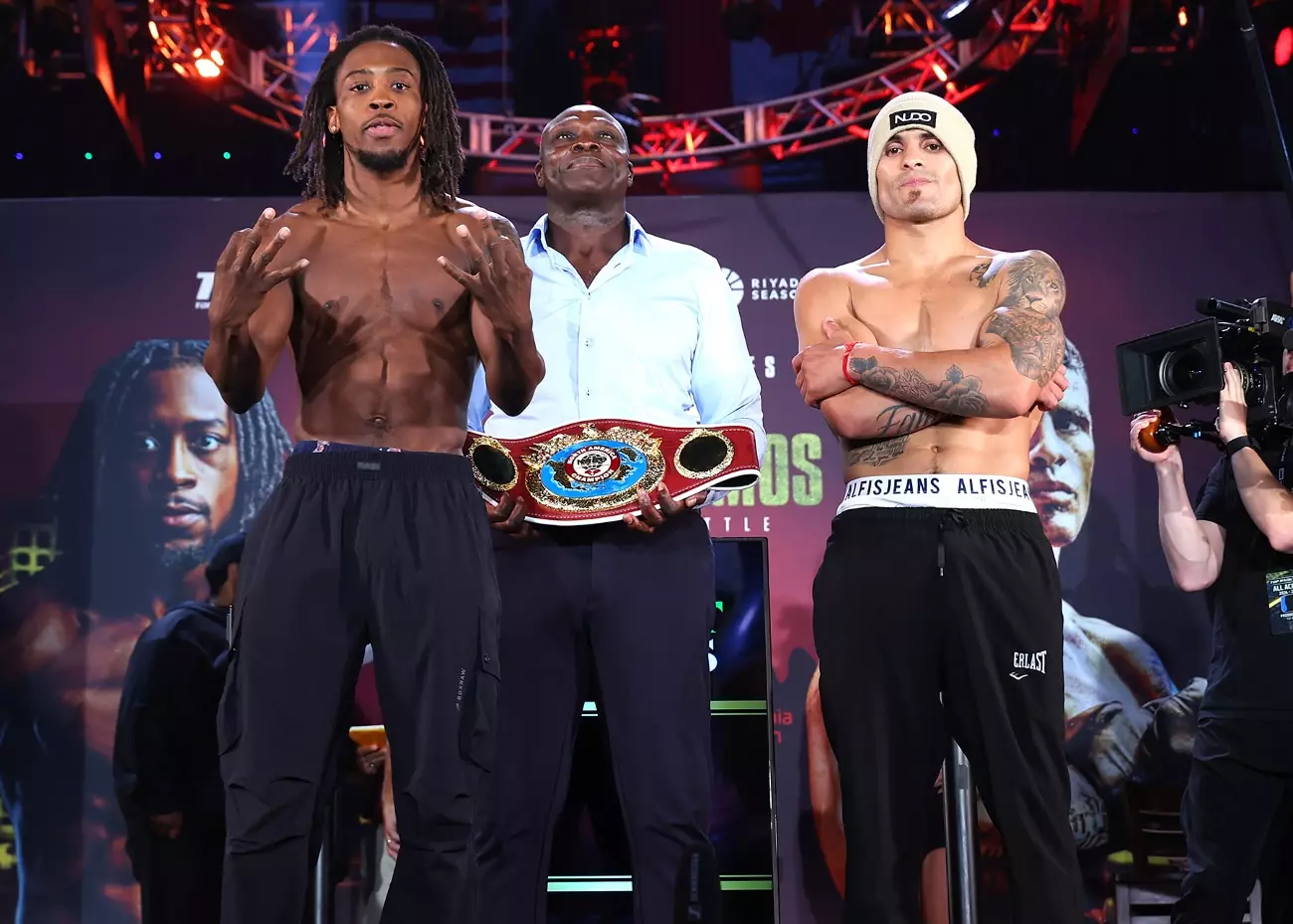The upcoming boxing match between Keyshawn Davis and Gustavo Lemos has stirred excitement and criticism alike as the two fighters prepare to face off at the Scope Arena in Norfolk, Virginia. With Davis boasting an impressive record of 11 wins and 7 KOs, and Lemos, a seasoned contender with a record of 29 wins and 19 KOs, expectations were high. However, the excitement was dampened when Lemos significantly missed the lightweight limit by 6.4 pounds, weighing in at 141.4 pounds. This article delves into the implications of this weight discrepancy, the fighters’ pre-fight dynamics, and the broader issues surrounding fight arrangements in professional boxing.
The decision by Lemos to come in overweight has sparked extensive debate among fans and analysts. Many believe that Lemos may have intentionally skipped the rigorous weight cut associated with transitioning from light welterweight to lightweight, where he would have been required to slim down to 135 pounds. This argument is bolstered by Lemos’s natural fighting weight and the physical toll that weight cuts impose on boxers. Having Lemos come in at 141.4 pounds gives him a potential advantage in terms of strength and stamina, which raises questions about the integrity of the competition.
Fans have taken to social media to express their discontent, arguing that if Lemos had adhered to the weight limit, he would have faced significant physical disadvantage against the potentially faster and more agile Davis. The consensus among many is that the weight discrepancy could skew the fight’s outcome and later serve as an excuse should Davis lose. This dynamic illustrates a complex dilemma in boxing: the technicalities and regulations of weight classes often give rise to controversies that overshadow the sport itself.
Top Rank’s decision to match Davis against Lemos, a fighter who primarily competes in the light welterweight division, has drawn scrutiny. Critics argue that the promotional company failed to adequately assess the risks associated with such matchups, as they often result in fighters either fighting outside their natural weight class or facing opponents with a distinct advantages. Moving forward, there is a clear need for promotional entities to prioritize proper matchmaking, ensuring that opponents are from the same weight division. This would prevent larger discrepancies in weight that can compromise the fairness of bouts.
The matchmaking dilemma is not just about fairness for the fighters but also reflects on the expected outcomes and public perception. Davis, being a rising star in the boxing world, deserves fights that not only promote his skills but also treat his opponents fairly, contributing to his growing legacy rather than potentially tarnishing it with questionable victories.
Pre-Fight Dynamics: The Face-Off
In the lead-up to the fight, the pre-fight face-off highlighted the tension between Davis and Lemos. Ignoring directives not to engage physically, Davis moved in close to Lemos, putting his fist to Lemos’ chin, an act that visibly rattled his Argentinian opponent. Such antics not only add drama to the matchup but also speak volumes about each fighter’s mindset. Davis appears confident and unyielding, a characteristic crucial for his emergence as a dominant force in boxing. Lemos’s reaction, which included stepping back with a smile, could be interpreted in various ways—either as a sign of respect or as an indication that he may be feeling the pressure.
This moment encapsulated the essence of both fighters; Davis, as a rising prospect, is attempting to cement his status, while Lemos seems to be caught between respect for his opponent and the responsibility of proving himself in a higher weight class, possibly contributing to his decision to forgo weight restrictions.
As the fight approaches, the implications of Lemos’s weight miss remain a topic of heated discussion. For Davis, a victory could cement his reputation as one of the leading prospects in boxing, while the burden placed upon him due to Lemos’s disregard for weight limits might cast a shadow over any potential win. Conversely, for Lemos, a victory would not only silence critics but also validate his strategy of maintaining a weight advantage.
Fight enthusiasts eagerly await the clash on November 8th. The event promises to showcase the skills and resilience of two fighters, but the underlying controversies regarding weights and fight arrangements will continue to plague the sport, demanding ongoing scrutiny from fans, analysts, and promoters alike. As the boxing landscape evolves, ensuring equitable conditions for fighters will be paramount in preserving both the integrity of the sport and the safety of its athletes.

